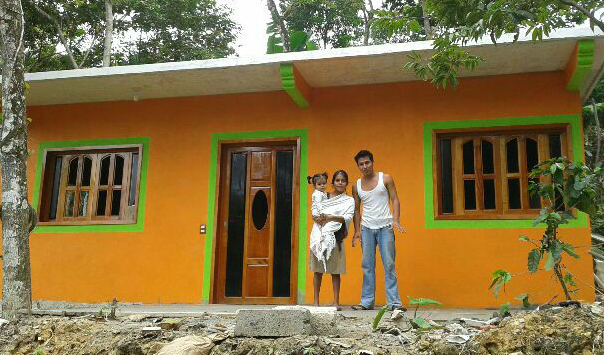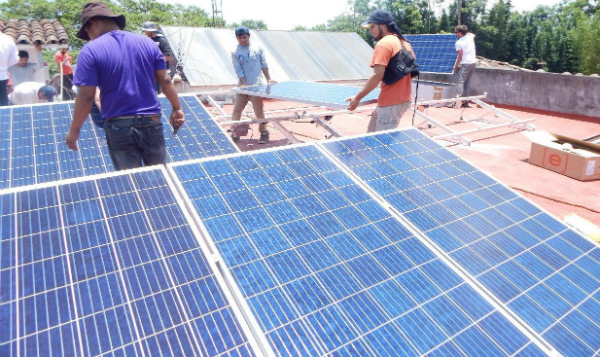 2019 marks ten editions of the European Microfinance Award, launched in 2005 by the Luxembourg Ministry of Foreign and European Affairs, as a biennial Award – the first of which took place in 2006, and after considerable interest and exposure, became annual after 2014. The Award serves two parallel goals: rewarding excellence, and collecting and disseminating the most relevant practices for replication by others.
2019 marks ten editions of the European Microfinance Award, launched in 2005 by the Luxembourg Ministry of Foreign and European Affairs, as a biennial Award – the first of which took place in 2006, and after considerable interest and exposure, became annual after 2014. The Award serves two parallel goals: rewarding excellence, and collecting and disseminating the most relevant practices for replication by others.
The Award’s influence and prestige has grown, and its €100,000 prize for the winner (and €10,000 for the runners-up), attracts applications from many organisations that are innovating in a particular area of financial inclusion. As well as the significant prize, an important additional benefit to winners is the exposure that they receive, and the opportunities for expansion and replication that the attention of the sector can provide.
To celebrate ten editions of the Award, e-MFP has decided to reach out to the previous winners, for a ‘where are they now?’ blog series, published in the order we receive them throughout 2019, to look at what they have been doing with their initiative since they won, and how the winning of the Award has helped, and what plans they have in store.
In 2017, the theme of the Award was Microfinance for Housing, which sought to highlight the role of microfinance in supporting access to better quality residential housing for low income, vulnerable and excluded groups, with no or limited access to housing finance in the mainstream sector.
Cooperativa de Ahorro y Préstamo Tosepantomin (Tosepantomin), the 2017 winner, targets rural communities living in marginalised areas, to which it offers savings and loans for housing improvement and house building. The cooperative mainly applies the solidarity group methodology and uses a holistic approach to its housing programme, with technical support that includes architectural planning, elaboration of housing project budgets, and oversight of the construction processes. The programme also promotes ecological and sustainable housing through eco-friendly building techniques, recycling, renewable energy and energy efficiency.
e-MFP: How has your initiative evolved since you received the Award? What have been the biggest changes?
Tosepantomin: On November 30th 2017, the Tosepantomin Savings and Credit Cooperative was announced as the winner of the European Microfinance Award 2017 on “Microfinance for Housing”. This was a huge moment for our organisation, and in particular, our housing programme.
Since then, Tosepantomin has expanded its activities and increased the provision of financial services to its cooperative members. New credit products were created in order to serve Small and Medium Enterprises (SMEs), those who provide public transport services and those who require financing for the purchase and installation of solar panels in their home, via a new credit product called “Yolchicaualis” (meaning ‘strength’ or ‘heart’ energy in the Nahuatl language). The prestige and attention from winning the Award has been a large factor in this development, and has allowed a virtually three-fold expansion of our housing program: while 869 families were served in 2017, with a loan portfolio of US$1.7m, 2,635 were served in 2018, with a loan portfolio of US$5m.
Tosepantomin is part of the Union of Tosepan Cooperatives and the Award has helped strengthen the Union’s internal alliance. The General Assembly of the Union of Tosepan Cooperatives named 2019 the “Year of Youth and Recovery of Values”, recognition of the fact that supporting the young is not a problem to solve but an opportunity to transform their reality for the better.
 e-MFP: What did winning the Award mean to your organisation? Did anything change as a result of winning, both within the specific initiative for which you won and in the organization more broadly?
e-MFP: What did winning the Award mean to your organisation? Did anything change as a result of winning, both within the specific initiative for which you won and in the organization more broadly?
Tosepantomin: In the framework of the Year of Youth and Recovery of Values, Tosepantomin and the Union of Tosepan Cooperatives have launched a program in 2019 that seeks to allocate social investment resources and efforts in order for young people to achieve their social and economic goals. The program has three main elements:
- Job training. Young people connected with Tosepantomin will be included in the governmental project Jóvenes Construyendo el Futuro (Youth Building the Future), initiated by the Mexican government with the aim to integrate them as trainees for one year in a workplace, with the view to developing the skills and specific competences needed to perform well in a working environment.
- Life plan training. Young people will be offered a diploma for the creation of ‘life plans’ to revitalise the community, based on principles from Gandhi’s ‘constructive program’ approach. This diploma will be divided into four modules: Cooperative Principles; the ‘Solidarity Economy’; Innovation and Entrepreneurship; and Life and Business Plans.
- Social Ventures. The main objective of the diploma will be to define life plans, and on this basis, develop social enterprises or initiatives that will lead to permanent jobs. Tosepantomin intends to provide finance for the productive activities resulting from the ventures. It’s hoped that 20 to 30 new cooperatives will be created each year by young people as a result of this.
The objective of the present approach is to help the so-called ‘solidarity economy’ – processes that promote common welfare, with the special intention of making young people aspire to improve and transform their life plans into reality within their communities, through social ventures that, crucially, allow them to stay in their area if they choose, rather than be forced to migrate for work.
Internally, winning the Award brought enthusiasm and pride among the cooperative members, accentuating the belief that with organisation and effort, one can achieve a great deal. Externally, it enriched Tosepantomin’s housing program through increased linkages and exposure. A collaboration agreement was signed with the foundation Habitat for Humanity, allowing for more significant financing opportunities for members and improvements in the technical assistance offered.
e-MFP: Are you aware of any impact your initiative has had on other organisations?
Tosepantomin: Tosepantomin became the financial arm of the cooperative movement created in 1977 in the Sierra Nororiental de Puebla region of Mexico, and later became the Union of Tosepan Cooperatives. The Union is composed of eight other cooperatives that all wish to improve the quality of life of the partners’ families in order to improve lives. Tosepantomin has therefore had an impact on its eight cooperative sister organisations, but not only that – our housing program has also influenced other Mexican organisations. Several savings and loans cooperatives as well as civil associations approached Tosepantomin to hear about our experience and share financing and technical assistance strategies.
e-MFP: What do you see in the future for your initiative and for this area of practice more generally?
Tosepantomin: In the near future, our housing program is seen as the main tool to enhance adequate housing of all cooperative members, their children and grandchildren, with a focus on providing and promoting eco-techniques to use energy and water appropriately, transform agricultural residues in organic fertilisers and produce healthy food products. Tosepantomin will also continue financing sustainable systems such as the organic production of food products used for home consumption, trade or fair trade. This will help our members achieve “Yeknemilis” (‘good life’ in Nahuatl), which remains the main objective of the Tosepan Union of Cooperatives, of which Tosepantomin is a member.
The European Microfinance Award is jointly organised by the Luxembourg Ministry of Foreign and European Affairs, the European Microfinance Platform (e-MFP) and the Inclusive Finance Network Luxembourg (InFiNe.lu). For more information on the 2019 Award on "Strengthening resilience to climate change" , visit the Award website.


Leave a comment